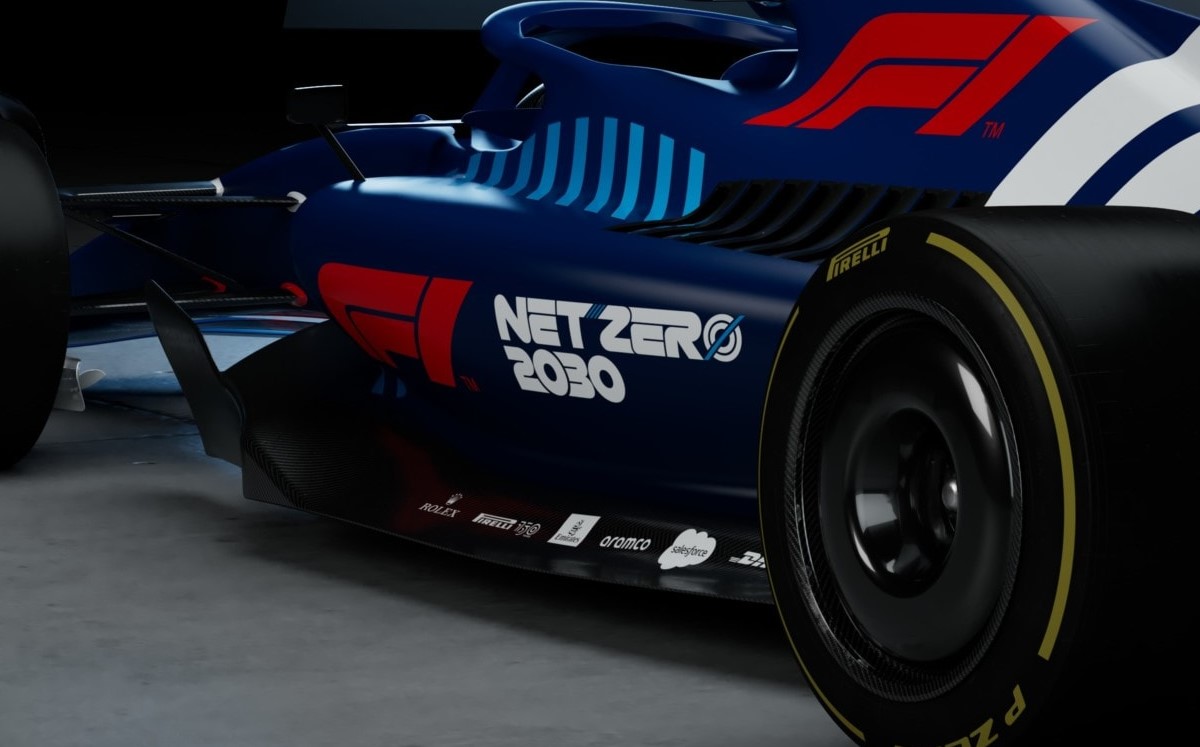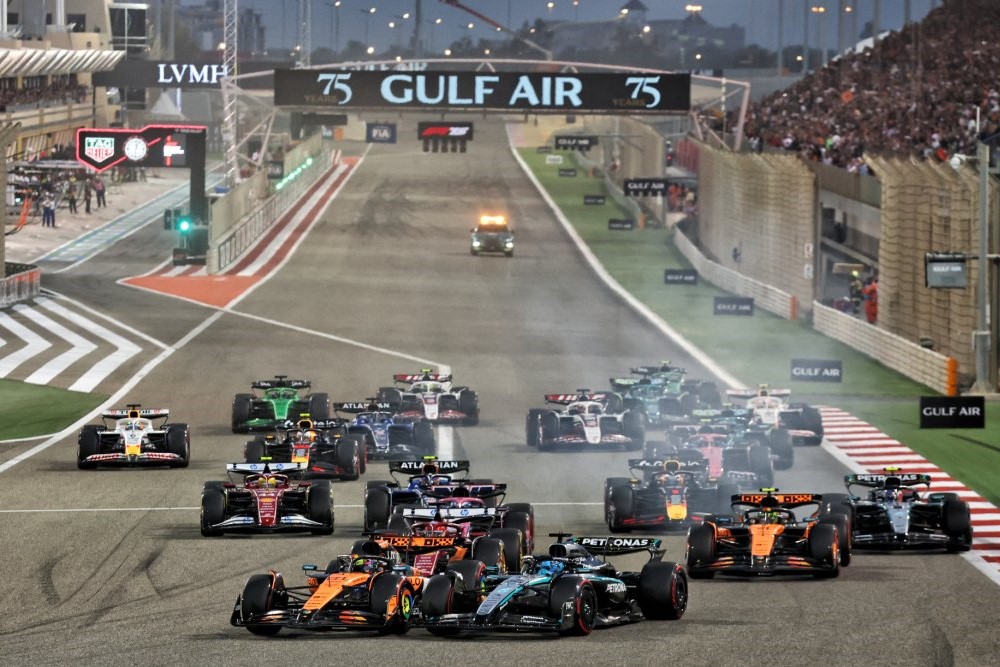F1 is on track to achieve its goal to become carbon Net Zero by 2030 according to its first environmental, social, and governance (ESG) report.
Formula 1 claims to have cut its carbon impact by 13% between 2018 and 2022 as part of its ongoing effort to halve its emissions by 2030 despite its continued growth.
The aim of F1’s Net Zero by 2030 initiative is to reduce absolute carbon emissions by 50% compared to its 2018 starting point, which entails energy use at its facilities, race events, as well as all associated travel and logistics.
F1’s baseline carbon dioxide emissions amounted to 256,000 tonnes. The ESG report indicates that this amount decreased to an expected 223,031 tonnes for the 2022 season, a 13% drop.
F1 claimed a 17% drop in last year’s report which did not cover 2022 while the season featured one extra race compared to 2021. Logistics operations made up 49% of F1’s 223,031 carbon emissions as the return of Australia and Japan to the 2022 calendar caused the slight rise.
The 2023 calendar included 22 races too, but 2024 will have a record-breaking 24 grands prix and the sport claims to be working on a number of projects to lessen the impacts of rising emissions.
“Sustainability is one of the most important factors to us, not only as a sport, but as a business,” explained F1 CEO Stefano Domenicali. “It is no longer enough for us to simply deliver great action and wheel-to-wheel racing on the track.
“We need to ensure that we are doing so in a sustainable way so our sport can thrive long into the future.
“F1 has been innovating and influencing wider society for over 70 years, and we’ve seen how the great minds and technology of the sport have had a positive impact in many different spaces, and now we have turned that expertise and insight to sustainability.
“We are a global sport with over 700 million fans around the world, which gives us a great platform to create change and influence those watching and engaging with F1 to act and leave their own positive legacy.
“Over the past four years, we have made significant progress, and we remain very focused on our goals and I’m excited to see the impact we can have.”
In an effort to cut emissions across the nine European rounds on the calendar, its logistics partner DHL has transitioned to a new fleet of eighteen trucks that run on drop-in biofuel. This comes after the transition to more efficient Boeing 777F freighter jets.
Organizing the international schedule is another essential component of improving logistics efficiency. Moving the Japanese Grand Prix to a new spring date is also reportedly one of the changes helping to optimize the movement of freight from Australia and China to the following events, though this is still a work in progress.
“The reason that’s important is because the calendar reflects our current freight model, which is where the majority of emissions are due to air freight that travels point to point,” said Ellen Jones, F1’s Head of Energy, Sustainability and Governance.
“When you can reduce those distances, you can reduce your carbon footprint, in addition to the technological innovation that we can then support, such as biofuels and trucks, and sustainable aviation fuel in the future.”
F1 has also developed strategies to decrease the number of freight and personnel needed at events by boosting its remote capabilities alternatively.
“The transition to renewable energy both at home and away is really critical for us and is really driven the first 13% in terms of our reductions,” said Jones. “Within the 2022 stats, that’s driven a 56% decrease in emissions across factories and facilities.
“To be accounted in 2023 and beyond, you can also start to see how we’re transitioning to renewable energy outside of the UK.”
F1 claims that by using renewable power generators powered by solar energy and biofuel at the Austrian Grand Prix last year, paddock emissions dropped by 90%. The positive result indicates that more races will be powered similarly in the future.
Concurrently, there is an effort to motivate promoters to increase sustainability at their events. Jones estimates that over 75% of race promoters will soon use renewable energy at their race events as F1 highlights the goal as the basis for contract renewal.
“The first thing that we did when I started here about two years ago is to update contracts, you need to say what are our expectations to host a Formula 1 event,” Jones added.
“We’ve had a fantastic response to how we work with our promoters. Not just with energy at event, but a number of critical areas for us, such as local fan travel, all the way through to local community.
“There are minimum delivery clauses that we have in place with our promoters. We have an annual sustainability plan and give feedback on how they’re delivering against those areas.
“And as we hit the next stage of our sustainability strategy, those minimum standards and contracts post-2025 are getting higher again.”
F1 will transition to power units powered by sustainable fuels starting in 2026 despite the fact that the emissions from its 20-car grid alone make up less than 1% of its overall footprint. Therefore, the main motive underpinning the move is to persuade the sport to use carbon-neutral fuel in other places.
Once the results of F1’s most recent set of initiatives are determined, Jones is optimistic the sport will meet its 50% reduction target by 2030, but she did warn that the improvements won’t be consistent.
“We definitely are on track to hitting that target goal and the key parts of that are the outcomes of the trials and the work that you can read about in the 2023 report,” she added. “It is the continued uptake of alternative fuels across all parts of our operations, from the car, to the air, to the generators on site.
“It is also that shared impact of bringing others on the journey with us. It’s one thing to have all 10 teams having a different solution when they’re in the paddock. There are much bigger savings when you have a centralised solution that people can work towards together.
“And then the third piece of that, which probably has the longest lead time, is what do next-generation operations look like?
“One and two are things that you will start to see this year, and you will see them accelerate. Next-generation operations will have a longer tail because there’s so much that goes into that technology.”
The diversity progress including grants for students from underrepresented groups pursuing STEM fields is also detailed in the report. Female involvement has also increased at the grassroots level thanks to the UK’s Discover Your Driver karting program offered by F1 Academy.
In 2024, the all-female series will support more grand prix, and F1 will also launch the “Discover your Drive” project, which seeks to identify potential future talent for the F1 Academy.
There has been a 265% rise in female participation between the ages of 11 and 16, according to F1. These four main pillars contributing to the rise are: community, participation and progression, talent discovery, and youth engagement.





